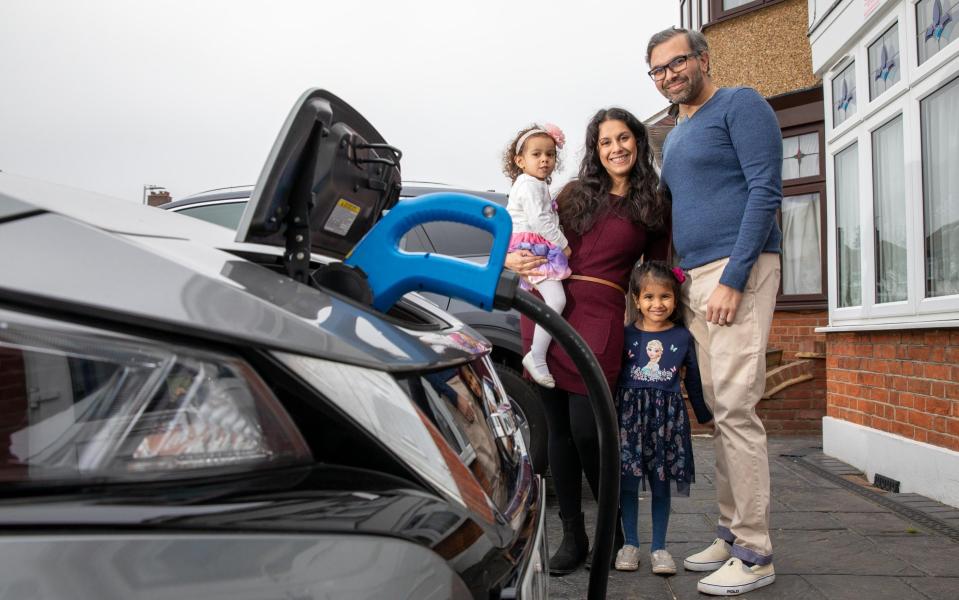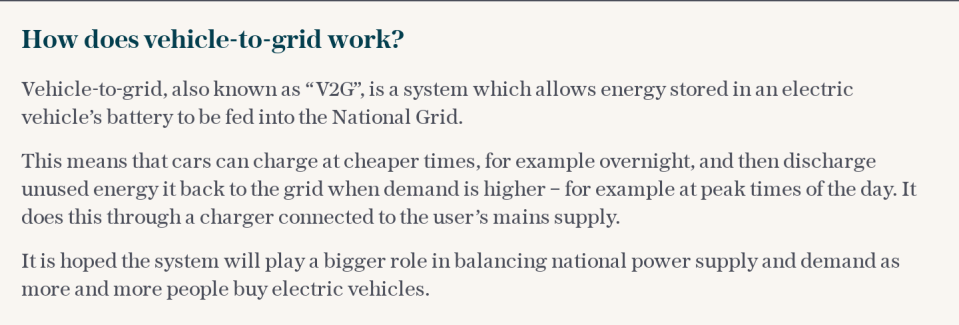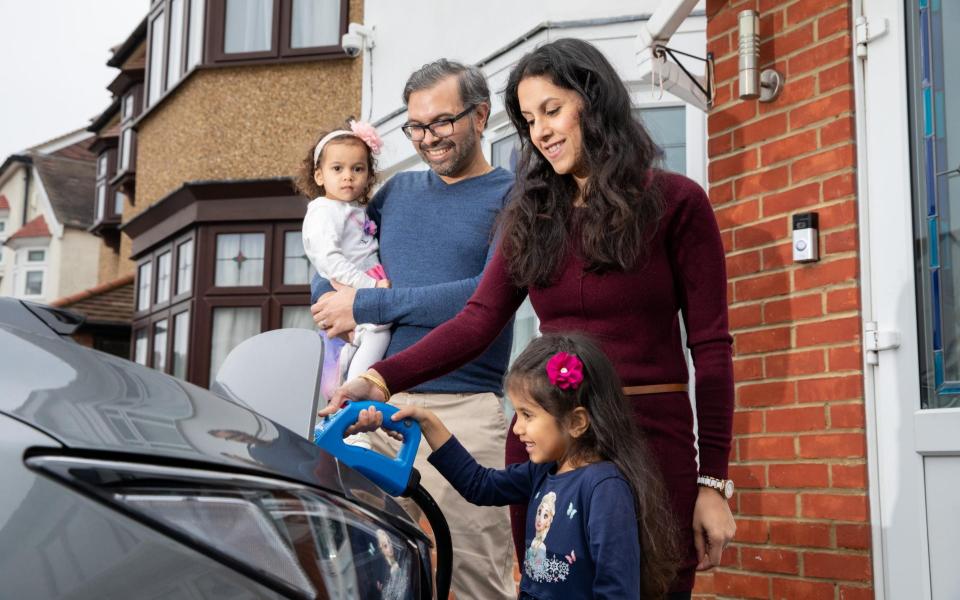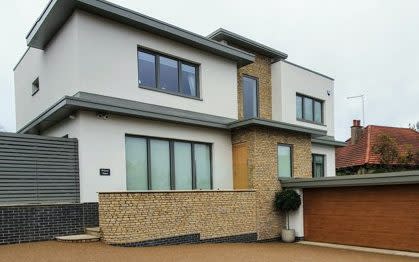How I used my electric car to power my home – and cut my energy bills

An "off-grid" home conjures images of a cottage in the middle of nowhere and a hair-shirted existence. But it's possible to turn a normal property into a carbon-negative home – simply by using an electric car.
Some tech-savvy, money-saving homeowners have turned their houses into energy-efficient “eco-systems”. These use solar panels to produce electricity, which is then stored in their electric car or a battery pack overnight.
In some cases, electric vehicle owners are able to buy cheaper and greener energy overnight and sell it back to the grid at peak times, cutting their bills substantially.
One couple, Shilpen Patel and his wife Reshma, recently installed a "vehicle-to-grid" system in the driveway of their north London home.
This method allows electric vehicle owners to make money by selling power back to the grid when demand is high, while charging their batteries when supply is plentiful. The Patels' Nissan Leaf has a battery large enough to power their home for two days.

Mr Patel said: “After my mortgage, my utility costs are one of my biggest expenses, so I wanted to find a way to offset that. We have solar, which is great, but it’s only great when the sun is shining, and only if you’re there to use the energy.
“If we’re at work, we’re not able to utilise it. With vehicle-to-grid, we can store that energy and use it another time, as well as providing excess to the grid.”
Vehicle-to-grid doesn’t require a home to have solar panels. When an electric car is plugged in, whatever energy is left in its battery will be exported out, first to the home and then to the grid. Later in the evening, once energy is cheaper, the system automatically charges the vehicle back up again.
Mr Patel is part of Octopus Energy’s vehicle-to-grid “Powerloop” trial. He added: “Even though I’m charging and discharging it every night economically it is much cheaper than a petrol car.”

Vehicle-to-grid systems aren’t available with all suppliers or for all electric vehicles, and the deals that are available currently take the form of small-scale trials, such as Octopus Energy’s Powerloop trial, which will run until March next year.
Energy provider Ovo said that customers on its vehicle-to-grid tariff have saved up to £800 a year on their energy bills.
Meanwhile Octopus's Powerloop bundle includes a leased Nissan Leaf. Octopus credits customers £30 off their lease per month for completing 12 "V2G" sessions.
Another electric vehicle user, Mike Smith from Lincolnshire, drives a Tesla, which is not yet capable of vehicle-to-grid. In the meantime, he has built a carbon-negative home powered by a system connecting his two Tesla Powerwall batteries and solar panels.
This allows his home to operate similarly to the Patels’, but the unused energy is stored in batteries instead of his car.

The house has no gas supply and is run purely on electricity, of which the solar panels provide around 60pc. Mr Smith said that for about four or five months of the year, his home is “pretty much off the grid”.
He added: “In our old house we were spending around £3,000 a year on heating and an extra £4,000 a year on petrol.
"In the new house, we will spend less than £1,000 a year on energy. I think we’ll break even on our investment in about four or five years.
“If you put the money in a bank at the moment, you’re lucky to get 1pc, so the return on investment with this is much higher than that. You don’t have to be an eco-warrior or someone just interested in saving money, the two things can go hand in hand.”
